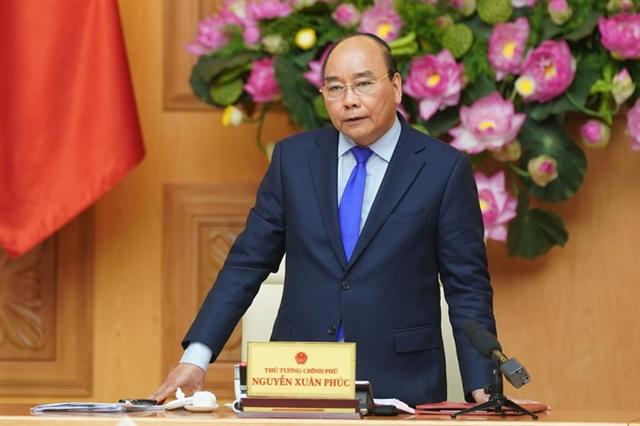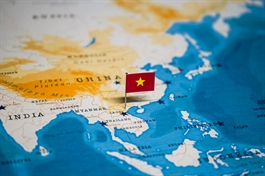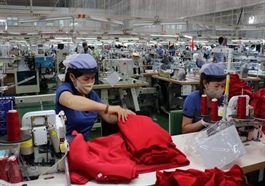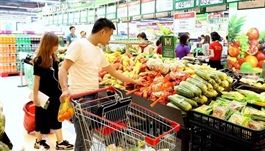Vietnam gov't sticks to target to tame inflation at 4%
Vietnam gov't sticks to target to tame inflation at 4%
While the inflationary pressure, especially driven by hikes in prices of oil and food, devalues some currencies, Vietnam’s inflation target would remain unchanged.
With the average consumer price index (CPI) expanding 4.19% in the first six months of 2020, the target of curbing inflation below 4% set for this year remains feasible, according to Prime Minister Nguyen Xuan Phuc.

Prime Minister Nguyen Xuan Phuc. Photo: VGP.
|
For the remaining six months of this year, the Vietnamese government would continue to focus on controlling inflation, Phuc said at a government meeting on July 1, adding this would be key to stabilizing the macro-economy and creating favorable conditions for economic growth.
In addition to addressing businesses' concerns, government agencies should pay more attention to prices of goods and inflation, he stated.
While the inflationary pressure, especially driven by hikes in oil and food prices, devalues some currencies, Vietnam’s target to keep the inflation rate under 4% would be unchanged, Phuc stressed.
“Flexible state management is required to avoid excessive intervention in the economic recovery process,” Phuc noted.
Phuc went on saying inflation control does not mean tightening fiscal and monetary policies. Meanwhile, price management policy must contribute to economic stabilization and facilitate business activities.
The PM requested the State Bank of Vietnam (SBV), the country’s central bank, and the Ministry of Finance (MoF) to continue managing the fiscal and monetary policies in a flexible manner.
The Ministry of Industry and Trade is tasked with closely monitoring the market and stepping up efforts against smuggling and trade frauds.
The MoF has set up two scenarios for price management. In the first scenario, the average CPI in 2020 is predicted to go up 3.64% year-on-year, and in the second one, the rate would be 3.95%.
The SBV expected Vietnam’s CPI in 2020 to be in range of 3.2 – 4.02%, while the General Statistics Office (GSO) also forecast two scenarios, one from 3.5 – 3.7% and another from 3.8. - 4.1%.
The consumer price index (CPI), the main gauge of inflation, expanded 4.19% year-on-year in the first half of 2020, a six-month high during the 2016 – 2020 period, according to official date.
Core inflation in the first six months of 2020 was up 2.81% year-on-year.























